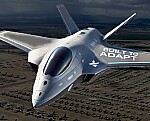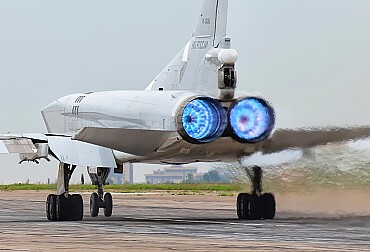Securing the skies: The Air Force's new $13 Billion "Doomsday" aircraft
In a significant development for U.S. military aviation and national security, the Air Force has awarded Sierra Nevada Corporation (SNC) a monumental $13 billion contract to engineer and deliver a new fleet of "Doomsday" planes. These aircraft, formally known as the Survivable Airborne Operations Center (SAOC), are set to replace the aging E-4B Nightwatch aircraft, which have served as the National Airborne Operations Center and a mobile nuclear command and control outpost for decades.

Overview of the SAOC program
The contract, stretching until July 2036, entails replacing the four aging E-4B planes. The SAOC will serve critical roles, including transporting the Defense Secretary and providing a command center in the event of a nuclear incident. The new fleet will consist of eight to ten aircraft, sourced from commercial derivatives, likely the Boeing 747, though SNC will need to acquire used models due to Boeing's production cessation of this model.
Technical enhancements and capabilities
The Air Force's specifications are stringent: the new aircraft must include military systems such as air refueling capabilities and secure communications. More crucially, they need to be hardened against electronic and nuclear attacks, ensuring their operability in the gravest scenarios. The use of a Commercial Derivative Aircraft indicates a cost-effective approach to meeting these high military standards. The project will employ a modular open systems approach, facilitating future upgrades and modifications essential for the aircraft’s longevity and effectiveness.

Challenges and expectations for SNC
This contract represents a significant leap for SNC, a mid-sized defense contractor, thrusting it into the spotlight of major military projects. The expectation is not only to deliver on the technical requirements but also to manage one of the largest and most complex undertakings in its history. The SAOC program's success will hinge on SNC’s ability to integrate these advanced systems into the commercial airframes effectively.
Strategic implications
The development of the SAOC is a cornerstone in the broader context of U.S. military modernization, particularly its nuclear capabilities. Alongside projects like the new nuclear ballistic missile and a long-range stealth bomber, the SAOC is crucial for ensuring the country's nuclear command, control, and communications remain secure and effective.
Industry impact and future directions
The decision to pass over Boeing, the original manufacturer of the E-4B and a seasoned contractor in large-scale military projects, underscores a significant shift in the defense procurement landscape. Boeing's elimination from the race, reportedly due to disagreements over contract structures and data rights, paves the way for other firms like SNC to assert their capabilities in this high-stakes arena.
The investment earmarked by Congress, including $744 million for the 2024 fiscal year and a projected $1.7 billion for 2025, indicates the federal government's commitment to advancing this vital national security initiative. As SNC spearheads the development of the SAOC, the focus will also be on ensuring that the program stays on track with its budget and timelines, given the complexities and high costs associated with such sophisticated military hardware.
Conclusion
The new SAOC program is more than a procurement decision; it is a strategic enhancement of the U.S. military's readiness and resilience in an increasingly precarious global security environment. With Sierra Nevada Corporation at the helm, the project is not only a test of the company's engineering and management prowess but also a significant step forward in safeguarding the nation’s highest command elements. As these aircraft take to the skies in the coming years, they will symbolize a renewed commitment to maintaining peace and security in an uncertain world.









